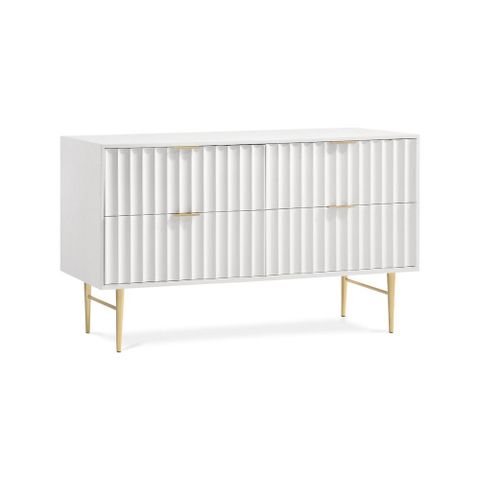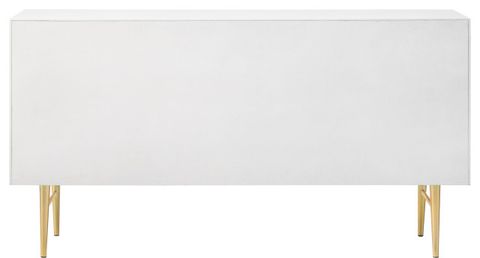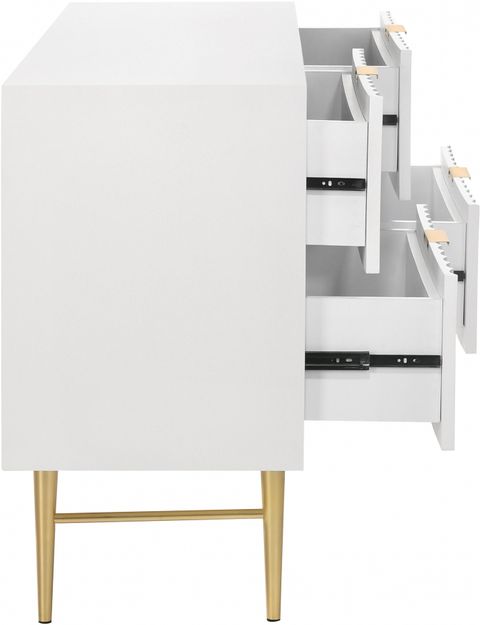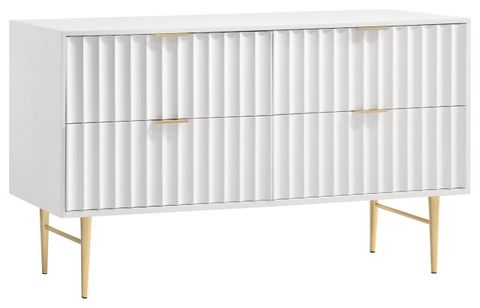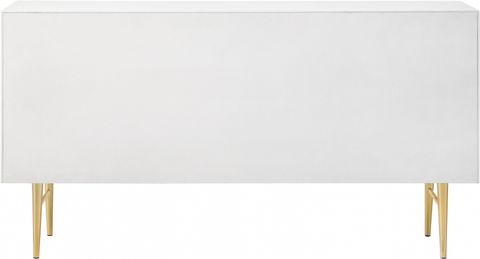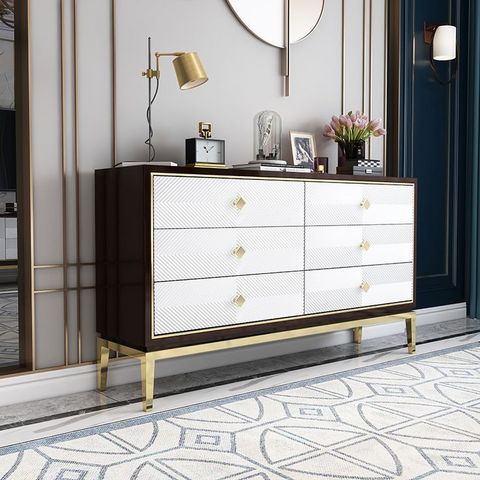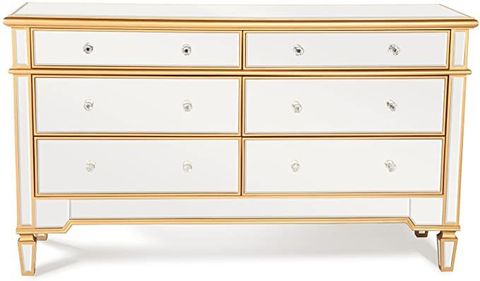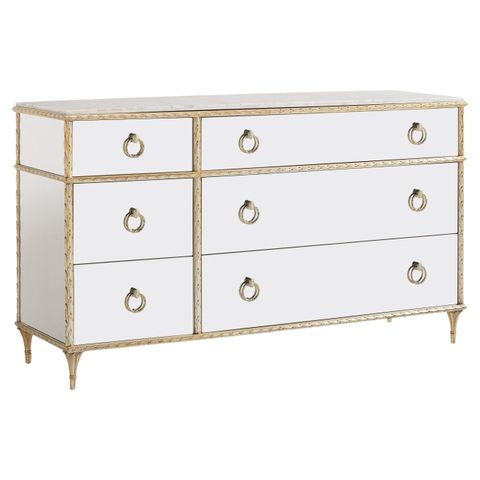In the world of furniture design, few challenges are as nuanced as crafting pieces that embody both stark minimalism and refined elegance. This delicate balance isn’t just about aesthetics—it’s about creating functional art that speaks to our deepest desires for order and beauty. When we look at exceptional modernist dresser designs, we see how master craftsmen have learned to whisper rather than shout their message.
Picture this: You walk into a room and immediately feel at ease. Not because everything is flashy or overwhelming, but because every element seems carefully chosen and perfectly placed. That’s the magic of well-designed modernist dressers. They’re like quiet conversations that somehow manage to say everything important. These pieces don’t demand attention, yet they command respect. They prove that less truly can be more when done right. The secret lies in understanding how to blend clean lines with subtle sophistication, how to make functionality beautiful without sacrificing purpose.
Understanding Modernist Principles
Modernist design emerged from a rebellion against ornate Victorian styles and excessive decoration. It championed the idea that form should follow function, that beauty comes from simplicity and honest materials. When designers apply these principles to dressers, they strip away unnecessary elements while maintaining visual appeal. Think of it like a well-written poem—every word matters, and nothing is superfluous.
Key characteristics include:
• Clean, unadorned surfaces
• Geometric shapes and lines
• Natural materials like wood and metal
• Emphasis on craftsmanship over ornamentation
• Functional design that serves its purpose beautifully
The philosophy behind modernist design isn’t about creating stark, cold spaces. Instead, it’s about finding the perfect middle ground between utility and aesthetics. A modernist dresser achieves this by using quality materials, thoughtful proportions, and deliberate details that elevate simple forms into something extraordinary.
The Power of Negative Space
What makes a modernist dresser truly special isn’t just what’s there, but what’s not there. The concept of negative space—the empty areas around and between objects—becomes a crucial design element. This isn’t just about leaving things out for the sake of it. It’s about creating breathing room that allows the eye to rest and focus on what truly matters.
Consider how a minimalist dresser with three drawers creates visual harmony. The spaces between the drawers, the gaps in the cabinet doors, even the empty wall behind it—all contribute to the overall composition. This approach prevents visual clutter and allows each element to shine individually while working together as a cohesive unit.
The strategic use of negative space also helps define the proportions of the piece. A tall, narrow dresser with generous gaps between its elements feels more elegant than one that fills every inch of available space. It gives the eye room to move, creating a sense of calm that many people find deeply appealing.
Material Selection and Texture Play
Materials speak volumes in modernist design, especially when they’re chosen thoughtfully. The best modernist dressers often combine different textures and finishes to create visual interest without compromising their clean aesthetic. This might mean pairing smooth, polished wood with matte metal hardware, or using natural wood grain to contrast with sleek, brushed steel.
Wood remains a cornerstone material, offering warmth and organic beauty. However, modernists don’t stop there. They experiment with combinations like wood and glass, or incorporate natural stone elements for added dimension. The key is ensuring that all materials complement each other rather than compete.
Texture plays a particularly important role in creating tactile interest. A smooth wooden surface might be contrasted with a slightly textured drawer front, or a glossy finish might be balanced with a matte back panel. These small variations keep the design fresh and engaging without crossing into overly decorative territory.
Proportions and Scale Considerations
One of the most challenging aspects of modernist dresser design is getting proportions just right. Too large and the piece overwhelms the space. Too small and it looks insignificant. The ideal modernist dresser strikes a balance that feels both substantial and graceful.
When considering scale, designers must think about how the piece relates to surrounding furniture and architectural elements. A bedroom dresser should complement the bed and nightstands, while a dining room dresser needs to work harmoniously with the table and chairs. The proportions should feel intentional rather than arbitrary.
Vertical proportions often work better than horizontal ones in modernist designs. Tall, slender pieces tend to feel more elegant and sophisticated than wide, low ones. This doesn’t mean all modernist dressers must be tall—they simply need to maintain clean vertical lines and avoid bulky, boxy shapes that feel outdated.
Functional Beauty in Practice
Modernist design never forgets its core mission: serving the user’s needs. A truly successful modernist dresser balances aesthetic considerations with practical functionality. This means thoughtful storage solutions, easy-to-use hardware, and consideration for how people actually live and move through their spaces.
Smart modernist designs might feature:
• Hidden compartments that reveal themselves only when needed
• Drawers sized appropriately for specific items
• Hardware that disappears when not in use
• Storage solutions that maximize space efficiency
• Consideration for how lighting affects the piece’s appearance
The beauty of functional design lies in its invisibility. When a dresser works flawlessly without drawing attention to itself, it succeeds completely. People appreciate that their furniture enhances rather than hinders their daily routines. The modernist approach recognizes that beauty and utility aren’t competing forces—they’re partners in creating meaningful objects.
Color and Finish Harmony
While modernist design often emphasizes neutral tones, the choice of color and finish significantly impacts how a dresser is perceived. The goal isn’t to avoid color entirely but to use it strategically to enhance the overall design rather than distract from it.
Natural wood tones remain popular choices, from warm oak to cool ash. These colors naturally complement most interior styles and provide a sense of timelessness. However, modernists also embrace other approaches like:
• Deep charcoal or black finishes for dramatic contrast
• Soft whites or creams for brightening spaces
• Warm browns that add richness without overwhelming
• Subtle metallic accents for modern sophistication
The key is consistency. A dresser should feel part of a larger design story rather than standing apart as an isolated element. This means choosing colors and finishes that either complement existing elements in the room or provide a thoughtful contrast that enhances the entire space.
Creating a modernist dresser that successfully balances minimalism and elegance requires understanding that true sophistication comes from restraint and intentionality. It’s not about making things simple for the sake of it, but rather about removing the unnecessary to reveal what’s essential. When done well, these pieces become quiet anchors in any room, providing both practical function and visual satisfaction. They remind us that sometimes the most powerful statements are made with the fewest words, and the most beautiful designs often emerge from the careful consideration of what to leave out rather than what to include. The art lies in knowing exactly how much is enough, and how to make that amount absolutely perfect.


